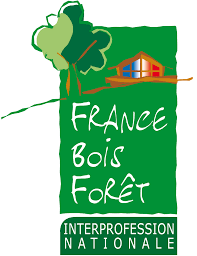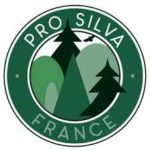“The sustainability of the wooden musical instrument is totally dependent on a respected biodiversity”
Last update, April 03, 2021: The action plan of the luthiers of the APLG for the preservation of forests is presented in several short and long term stages.
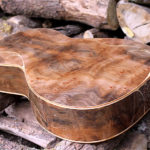 In the short term, actions have already been taken such as:
In the short term, actions have already been taken such as:
– the development of the management of the provision of lutherie wood from our regions through a pilot project in Bourgogne Franche-Comté,
– broadening the luthier’s knowledge of the world of woods (taxonomy, anatomy, state of health and regulations of the species).
To this should be added a communication work to make known to the actors of the wood sector, the active presence of the trades of the manufacture of musical instruments.
To these actions on the ground, the APLG also wishes to suggest action levers to as many people as possible, with the first example of citizen acquisition of forests in order to preserve biodiversity in the face of industrial exploitation of forest habitats.
In the long term, and even if its role and ambition is not to become a forest manager, the APLG wishes to be an active player in the renewal and preservation of forests. The association is already involved in planting projects, but we are well aware that its impact will be minimal. It is therefore also by working in the short term on a communication plan to convince as many people as possible to follow these initiatives that such projects will have meaning and a real impact on the overall management of the wood resource.
Five-step short-term axis
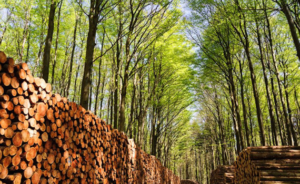 Observation
Observation
Trees cut down as part of sound forest management in public and private forests are partly sold at low prices for firewood and if they cannot find a buyer, they end up being shredded.
Among these trees, there are certain species that we could use as lutherie wood (see a first global list here).
As part of a management of the provision of local woods, our objective is therefore to initiate an action aimed at listing these species by region, department or agglomeration of municipalities and put us in touch with the managers of these forests in order to may these woods continue their life in musical instruments rather than in a fireplace or a grinder!
A first pilot project is being set up – Information as of April 11:
A first working group was created by Philippe Bouyou, Yves Mion and Jacques Carbonneaux in collaboration with Gwladys UGUEN, coordinator of the Forestry Charter of Territory of the Pays Seine-et-Tilles in the Bourgogne-Franche-Comté region.
Like Jacques, elected from his commune (Coulanges La Vineuse – 89), Philippe Bouyou (Villecomte – 21) joined the working group on the implementation of the Forest Charter of Territory. Among the points addressed in this charter, we find our objective: “Develop a local business sector for the 1st and 2nd wood processing”. Jacques and Yves joined Philippe in this working group in early 2021.
We are therefore going to identify the profession of luthier, as a craftsman in the wood industry, in this initiative. Discussions and meetings have already taken place with the ONF and wood collection is already underway.
This pilot project in the Bourgogne Franche-Comté region will be monitored and developed in the region under the expertise of Bernard Michaud (forester and APLG member).
Objective: To use, as part of his luthier activity, the wood resource of identified species available on his local territory in agreement with the competent authorities and in collaboration with:
![]() Public actors (ONF, National and Regional Center for Forest Property) and,
Public actors (ONF, National and Regional Center for Forest Property) and,
![]() Private actors (private forest owners, companies or private associations) and,
Private actors (private forest owners, companies or private associations) and,
![]() Bernard Michaud and the APLG timber commission
Bernard Michaud and the APLG timber commission
For the wood of identified trees to be used, the tree must be ready to be cut (or already cut), that it is mature and its cutting authorized and supervised by the competent authority of the territory.
IMPORTANT: it is essential to take as a principle not to cut a tree to exploit its wood resource, but to exploit it when the cutting has been authorized by the competent authorities of the territory.
The luthier will ensure the selection of the available species, and in collaboration with local players in the wood industry, monitor the transformations of the wood until the final stage of storage in its unfinished part form.
Note: Depending on the volume of wood to be recovered, it will be necessary to decide on the feasibility of exploiting this resource. For this, the luthier will be accompanied by the wood commission of the APLG.
How to set up the exploitation of an available local resource?
- List the species present in the region (department, agglomeration of municipalities, etc.) of the luthier which can be used as lutherie wood (see a first global list here).
If no species is listed, broaden the scope of the search on the territory before deciding not to continue. Otherwise : - Get in touch with the ONF and the CRPF in your area in order to present the project to them. If an agreement is reached for you to be informed of the cutting of a tree of one of the species identified for exploitation, the following steps can be taken:
Comply with the EU timber regulations (EUTR) in order to obtain and draft the documents necessary for the legal exploitation of EU timber (the luthier will be accompanied by the APLG timber commission) - The luthier will then have to identify the local actors who can ensure:
- Cutting the log into a log or plank on site (mobile saw), or
- Transporting the log to a local sawmill
- Storage if the quantity is too large to take care of
Note: it is important not to put yourself in direct competition with local players and in particular with wood suppliers. The objective of the APLG is not to play a role in forest management but to be identified as a “reasoned” user of the available and underexploited resource of its geographical territory.
Observation
The artisanal violin making of musical instruments is very little known from other trades in the wood industry and is not identified in the list of its trades (photo below on the left), just like the woods of lutherie do are not listed in the exploitation of the wood resource (photo below on the right).
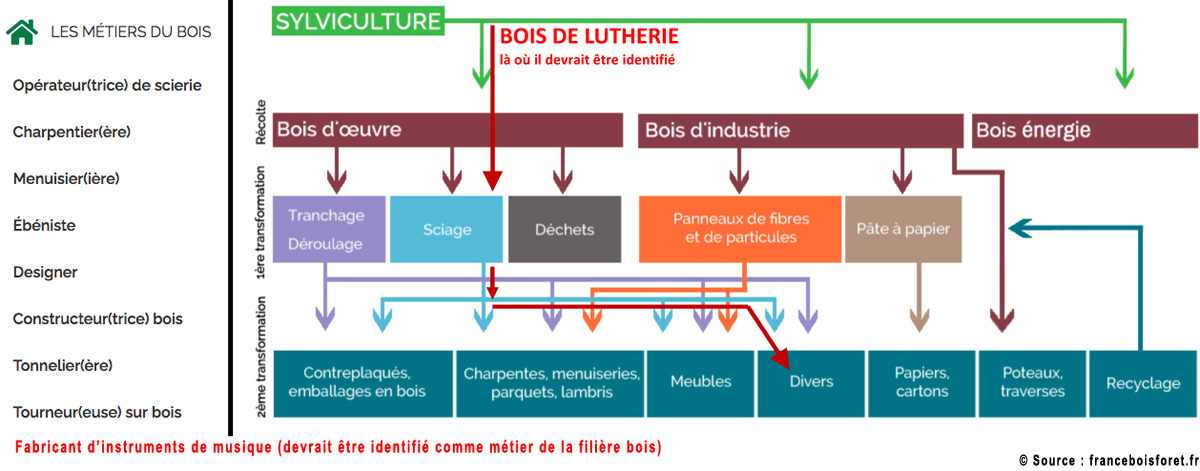
To our knowledge, instrumental making associations do not belong to professional bodies in this sector and given the implementation of this forest safeguard plan, it would be appropriate for the APLG to show a new example by joining one of these organizations in order to make known the trades of instrument making which, even if they consume little wood, offer wood products like no other!
But which organization to choose? To date (early April 2021), we are at the reflection stage but here are some proposals:
Objective: Make ourselves known and make our actions known to the timber industry by making the APLG join one or more organizations in this industry
The National Interprofessional Forest-Wood Industry was created on December 8, 2004, under the aegis of the Ministry of Agriculture in charge of Forests. From France Bois Forêt co-finances, alongside professionals in the sector and thanks to the CVO Compulsory Interprofessional Contribution, collective actions to promote, communicate and enhance French forests, in particular through the different uses of wood material.
France Bois Forêt brings together 24 professional organizations from the French forest-wood sector
The 24 members of the Board of Directors represent professional organizations in the French forest-wood sector, from seeds and forest plants to the first and second processing of wood. Signatories of the Interprofessional Agreement, they all act to identify innovative programs that are essential to the general interest and to its economic development.
APLG proposal: it is not possible to join this national body but it is important to make yourself known, in particular to tell them that our profession should be part of the list of professions in the wood sector, but also to inform them of our actions.
Following the advice of Bernard Michaud, FIBOIS (Interprofession de la Filière Forêt-Bois) is one of the proposals:
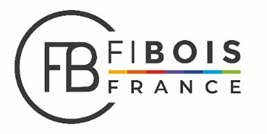 FIBOIS France, formerly France Bois Régions, brings together and federates 12 regional or departmental interprofessions of the French forest timber industry.
FIBOIS France, formerly France Bois Régions, brings together and federates 12 regional or departmental interprofessions of the French forest timber industry.
These regional interprofessions bring together actors and professionals in the forest-wood sector in the region.
Their objectives are to:
- promote forests and wood for all uses (construction, development, heating, packaging, etc.)
- bring together forest-wood industry professionals in their territory
- communicate about forestry and wood trades.
APLG proposal: it is not possible to join the national body because it is the regional FIBOIS which federate the members, which poses a problem for the APLG which is a national association.
We therefore propose to join the region of the pilot project which happens to be that of our forester Bernard Michaud, the Bourgogne-Franche-Comté region. (not defined to date)
Pro Silva France: public utility association which advocates irregular forestry vs. monoculture. Pro Silva France is a member of the European network Pro Silva, which now has more than 25 national delegations in Europe, and even a delegation in the USA. It is organized in 14 (inter) regional groups.
APLG proposal:
- APLG could join as a donor (more than 100 €) during the year
- APLG members and their clients could join as active members (45 €) or sympathizers (15 €). But the main thing is that the APLG adheres first and foremost.
Observation
In recent years, international regulations, which have become essential, require much more demanding knowledge for the woodworking industry than before. Indeed, it will soon no longer be possible to trade in wood or a wood product if it is not identified and declared with its full botanical name (genus + species), its country of origin and the date of its first import into the territory.
Objective: develop your knowledge of wood and be able to correctly identify your stock of imported and / or local wood, from a point of view:
![]() Taxonomy: know the botanical name of the species used, its distribution area and the date of its first sale (or import) – Page under construction;
Taxonomy: know the botanical name of the species used, its distribution area and the date of its first sale (or import) – Page under construction;
![]() Anatomy of the wood of the acquired species and ultimately of all the woods in the luthier’s stock: from a botanical but also mechanical point of view. APLG will provide support in collaboration with certain wood identification laboratories – Page under construction;
Anatomy of the wood of the acquired species and ultimately of all the woods in the luthier’s stock: from a botanical but also mechanical point of view. APLG will provide support in collaboration with certain wood identification laboratories – Page under construction;
![]() Wood mechanics: complete the database of tonewood in France with information for each species: density, rigidity, lightness, rot-resistance and stability – Page under construction;
Wood mechanics: complete the database of tonewood in France with information for each species: density, rigidity, lightness, rot-resistance and stability – Page under construction;
![]() Health status and regulations of the species: being able to use the right tools to know the health status / regulations of the species – see the IUCN tool;
Health status and regulations of the species: being able to use the right tools to know the health status / regulations of the species – see the IUCN tool;
![]() Guide “How to draft the wood invoices for your suppliers and the invoices for your customers” – Page under construction
Guide “How to draft the wood invoices for your suppliers and the invoices for your customers” – Page under construction
Following a documentary on the Morvan forest, we learn that there are citizen forest groups that buy forests before they are acquired by financial and industrial groups and thus avoid clear cuts and monocultures and preserve biodiversity. forests.
Among these forest groups, “Le chat sauvage” has already acquired a good number of plots.
- Example with Le chat sauvage: The forest group of Le Chat sauvage acquires and manages forests in the Morvan, with a view to sustainable forestry, protection of biodiversity and deciduous forests, threatened by intensive and increasing exploitation of coniferous trees.
- Become a member of the group:
- One share = 200 €
- One hectare bought by the group = 15 shares, so 3,000 €.
- Become a member of the group:
If it is not the role of the APLG to become a forest owner, it is important that the association learns about all the relevant citizen actions as part of its forest safeguard plan.
Preserving biodiversity being the first reason for these citizen actions, we can only invite other citizens, whether they are luthiers or not, to closely study the actions carried out in their region.
What are the interests of buying plots in the Morvan (or elsewhere, see if other groups that buy exist in other regions)?
- Participate in a very relevant action to develop sustainable forestry
- Action consistent and complementary with point 1. The craft professions of the wood sector who will be identified and who will participate in the new management of the local wood resource, will be able to financially enhance the hardwoods that will be felled within the framework of the compulsory maintenance by forest owners
- Building a sustainable heritage of wood for craftsmen
Taking action is a good thing, but it should be made known at each stage of the project’s progress and during the implementation of actions. In collaboration with the APLG external commission, the timber commission will put in place a short-term communication plan which will have to be intensified in the long term.
Communication of actions to:
- Professionals (luthiers, manufactures, distributors, resellers): communication already underway, see for example the Harpes Camac factory which is involved in a One Tree Planted project following our initiative;
- Schools of musical instruments making and music professions (future luthiers and resellers): Jacques Carbonneaux has already been working at the ITEMM CFA since 2019 on regulations and mapping of music professions. It would also be advisable to set up a training dedicated to the trade of musical instruments;
- Musicians, music schools, conservatories and the general public (training for prescribers);
Long-term focus
Harvesting local or imported timber must be conditioned by certain very specific criteria in order to respect the renewal of the species collected.
All the actions carried out in the short term will allow us to regularly draw up assessments and areas for improvement and must participate in the establishment of a framework of principles to be followed over the long term.
The work to be carried out in the long term cannot be undertaken by the APLG alone, other professional organizations in the instrument making will be invited to act, just as we are doing, in France, but also in Europe and internationally. .
The other wood craft sectors will also be contacted as soon as the first pilot projects of the short-term axis are set up.
- Local wood: Take stock of the state of the resource of lutherie wood by species and by range. For France, see the work of RENECOFOR by the ONF, which is a national network for long-term monitoring of forest ecosystems and which makes it possible to identify the habitats and threats of tree species in France: www. onf.fr/renecofor. The work to be done on the local species of lutherie wood:
- Establish its state of health, its area (hectare, volume and number of trees)
- Identify mature trees and ready to cut, the corresponding volume of wood
Identify all sectors of the wood industry consuming this species
- Imported wood: Take stock of the state of the resource of lutherie wood by species, by distribution area. Use existing tools:
- UICN Red list, list of threatened species
- Species+: list of CITES species and other multilateral environmental agreements
- Imported and local wood: Estimate a plan for planting trees of certain species over a given period (5 years, 10 years, etc.) depending on:
- A forecast of demand from the sectors of the wood industry;
- A precise mapping of the available resource;
- Monitoring of the health of the species;
- Avoid monospecific crops by favoring mixtures of species to preserve biodiversity;
- Adapted the species to be planted to climate change;
- Sustain plantation projects (OTP, ABCP) already underway.



